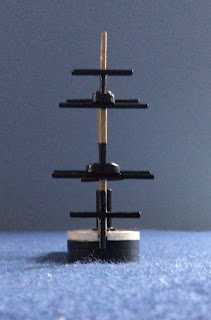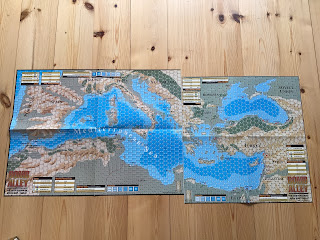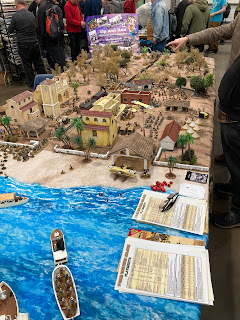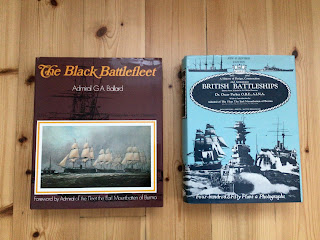For the first time ever I made the 140 mile trip via the A127, M25, M11and the A1 to Newark for the Other Partizan. The five hour round trip for a little over two hours of gaming goodness was absolutely worth it! It was busy, crowded and hard on the feet but I was able to get everything done that I wanted to - apart from meeting a couple of people (sorry Mr Barnes!).
The first port of call was to transact some business with Dave Lanchester which was, as ever, an ongoing pleasure (and I managed to reinvest some of the proceeds in some items that will feature in the next post) and one that I have no doubt will repeated!
The rest of this post will be largely a photo dump with some commentary - it has been rather a long day after all!
Look closely at the Sherman on the bridge at Arnhem - I managed to relieve 1st Airborne in 15 turns out of 20. This was a feat I also managed on my visit to COW a few years back. It is a tale I will tell my grandchildren - and mightily bored they’ll be….
John Armatys - overseer of Operation Market Garden, Wargames Development aficionado and all round good chap - who has persuaded me to pen a blog post about mast building!
Mr Flanagan - roller of legendary dice - thinking about his nest move against the esteemed Mr Evans (he moved at a critical moment and so you can only see part of his head!). I was very much taken by this game - properly researched history, attractive terrain and figures and an organiser passionate about the subject matter!
One half of Ken “Yarkshire Gamer” Reilly’s excellent Italian Wars bash.
The other half - Ken is sporting the blue tee shirt!
The whole thing - beautifully executed and with pike blocks that looked like they meant business
WW1 in East Africa in 28mm
The view from the landward side
The accompanying naval support
The view from the sea looking inland
More of the naval support including some old friends….
A-Fez of state….Just like that!
For a number of reasons my favourite game of the day - I will let the pictures do the talking
Native bearers
The view down the table
The all important back story and beautifully executed. I suspect that Eric would have been delighted to see this.
All of the pictures were taken on my phone so apologies for the quality but trust me, there are plenty of better quality ones around!
It was a very quick visit for me - around two hours - but I could have happily spent a full day and then some yanking time to take it all in. These games were the standouts for me but there was sufficient variety of games, large and small to cater for all tastes and all of a high quality.
My show haul was modest, three books and three bags of MDF bases but the shopping was never the main reason for going.
All that atmosphere - well done to all that made it such a special day.


















































